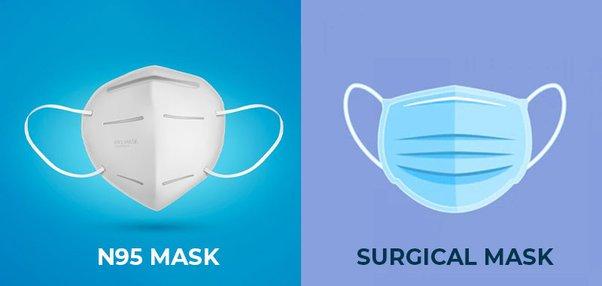The manufacturing of N95 masks is quite different from those of the surgical masks. For this reason, their prices are different. Whether you buy n95 masks from your nearest shop or online, these masks are way expensive than the surgical masks. The reason of the price difference is hidden in the manufacturing process of the two.
Why do surgical masks come cheaper?
Surgical masks are simple items that are reasonably priced (when they are not in short supply). However, their manufacture necessitates a variety of inputs as well as the assembly of many pieces in a very complex process. The filtering ability of masks is based on multi-layered non-woven fabric construction. Polypropylene, a polymer made from petroleum oil, is the most often used substance. Polypropylene is "melt-blown" to produce tiny-diameter fibers in a random pattern that trap small particles. The threads are electrically charged, attracting particles as the air travels through them (electret treatment).
What are the components of the raw materials?
Ultrasonic welding is used to join different layers of nonwoven fabric and cloth. An interior layer in contact with the mouth that may absorb moisture (usually white), a filter layer constructed of melt-blown electret non-woven material (as mentioned above), and an outside layer guarding against liquid splashes are the bare minimum (blue, to be distinguished from the inner layer). The inner and outer layers might be made of cotton or other types of fabric (but they can also be made with non-woven fabrics).
Metal nose strips are used to bend the mask around the bridge of the nose (aluminum, galvanized iron or steel). Simple masks have ties made of the same fabric as the rest of the mask, whereas more complex masks feature elastic ear loops (made, for example, of nylon spandex) that must be created separately and attached to the filtering layers.
These are generally simple procedures that may be performed by most textile enterprises, including workers manually running sewing machines for ear loops, for example. However, a complete production line that performs all activities and combines multiple types of equipment is more efficient. Specialized machines solder the layers together and stamp the masks with nose strips and earloops, starting with bobbins of non-woven textiles. For the best-performing masks, fully automated production lines can create up to 1000 masks per minute, while most masks are produced at between 35 and 200 masks per minute. After that, the masks are sterilized before being tested and packaged.
The manufacturing process of N95 masks is a different story!
Respirators follow a similar manufacturing method, with two exceptions. To grow stiffer and develop the appropriate shape, one of the layers is first passed through high-temperature and pressure calendar rollers. Second, high-efficiency melt-blown electret non-woven material is used to improve filtration, requiring higher-tech machines and raising production costs.
People who want to but N95 masks need to know that is not only
How the decision is made for cost?
The decision for cost is made on the following factors;
a. Cost of production is inversely proportional to the demand
b. Frequent bans on export
c. Less influx of inputs for the manufacturing process
d. Illegal sale of masks
e. Small-scale businesses that are only into selling, sell these masks at higher selling prices, making heavy profits

